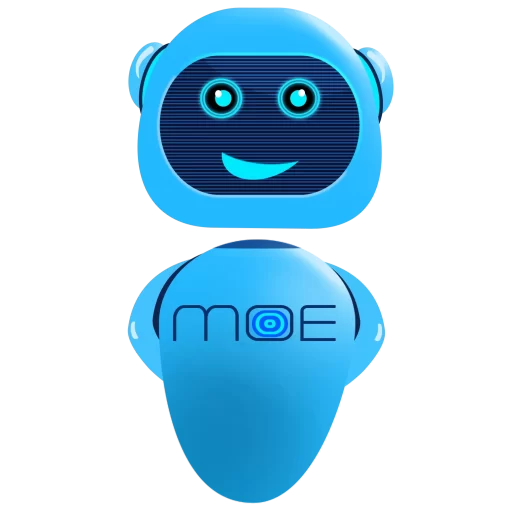Gone are the days when ordering food meant spending time browsing through menus on various websites or making lengthy phone calls. Thanks to technological advancements, the convenience of food delivery has reached new heights with the emergence of AI-powered chatbots. In this blog post, we will explore the efficiency and convenience of using AI-based food ordering chatbots on WhatsApp, revolutionizing the way customers interact with food delivery services.
Understanding AI-Based Food Ordering Chatbots
Before diving into the benefits, let’s first understand the concept of AI-based chatbots. Chatbots are virtual assistants powered by artificial intelligence, designed to interact with users just like a human would. These intelligent bots leverage machine learning algorithms to understand and respond to customer inquiries and commands. In the case of food ordering, AI-powered chatbots provide an automated platform to facilitate seamless orders and provide instant customer support.
The integration of AI technology into food ordering chatbots enables a more efficient and personalized experience for users. By analyzing customer preferences and historical data, these chatbots have the ability to understand individual preferences and make appropriate recommendations tailored to each customer’s taste buds.
Moreover, the availability of AI-based food ordering chatbots on popular messaging platforms like WhatsApp has opened up new avenues for businesses to connect with a wider user base. WhatsApp, being one of the most widely used instant messaging apps globally, allows businesses to leverage its user-friendly interface and accessibility to reach a larger customer base effectively.
Benefits of Using AI-Based Food Ordering Chatbots
The adoption of AI-powered chatbots for food delivery services brings numerous benefits for both customers and food service providers. Let’s explore some of these advantages:
Enhanced Convenience for Customers
Chatbots offer users the convenience of placing food orders at any time of the day, 24/7. Whether it’s a late-night craving or a busy lunch break, customers can easily access the chatbot on their smartphones and place an order without any hassle.
Furthermore, these AI-powered chatbots provide instant responses and order confirmations, eliminating the need to wait on hold or anxiously wonder if the order has been received. The ease and speed of communication with chatbots significantly enhance the overall customer experience, ensuring customer satisfaction and loyalty.
The chatbot’s ability to understand and adapt to individual preferences also allows for easy customization of orders. Users can specify their dietary restrictions, preferred ingredients, or even request special instructions, and the chatbot will accurately process the order accordingly.
Improved Efficiency for Food Service Providers
For food service providers, the integration of AI-based chatbots brings remarkable operational efficiency. Orders can be processed and managed seamlessly, reducing the chances of human errors that can occur during manual order placement.
With automated payment integration, customers can pay for their orders directly within the chatbot interface. This eliminates the need for manual handling of payment information, reducing the risk of errors or potential security breaches. The streamlined transaction process not only benefits the customer but also ensures smooth financial transactions for the food service provider.
An additional advantage of using AI-powered chatbots for food delivery is the valuable customer insights they provide through smart data analytics. By analyzing customer preferences and order patterns, food service providers can gain a deeper understanding of their target audience’s preferences and tailor their menus or promotions accordingly, thereby enhancing customer satisfaction and driving business growth.
Exploring the User Experience of AI-Based Food Ordering Chatbots on WhatsApp
AI-based food ordering chatbots on WhatsApp offer a user-friendly and seamless experience. The intuitive interface and easy navigation make it a breeze for users to select their favorite dishes and place an order. The chatbot interface mimics a natural conversation, providing a familiar and comfortable interaction for users.
Personalization is a key aspect of AI-based chatbots. These virtual assistants can analyze customer preferences based on previous orders, allowing for personalized recommendations. By suggesting new dishes or promotions based on each user’s taste preferences, chatbots can help users discover new flavors and enhance their overall dining experience.
Should any issues arise during the ordering process, AI-powered chatbots can quickly address them. Whether it’s a missing item from an order or a request for a refund, the chatbot can handle such matters efficiently, offering prompt problem-solving and ensuring customer satisfaction.
Addressing Concerns and Limitations
While AI-powered chatbots bring numerous advantages, it is important to address concerns and limitations. Data privacy and security are paramount when it comes to handling customer information. Food service providers must ensure that customer data is protected and not misused in any way.
Language barriers can also pose a challenge when implementing AI-based chatbots on messaging platforms like WhatsApp. Food service providers operating in international markets must account for language differences and aim to provide multilingual support to cater to a diverse customer base.
Handling complex or unique customer requests can be another limitation of AI-powered chatbots. While chatbots are trained to understand and respond to a wide range of queries, certain requests may require human intervention. Food service providers must have a system in place to escalate and address such requests effectively.
Case Studies: Successful Implementation of AI-Based Food Ordering Chatbots on WhatsApp
Let’s take a look at two case studies that highlight the positive impact of AI-powered chatbots on food delivery businesses:
Case Study 1: XYZ Food Delivery Company
XYZ Food Delivery Company implemented an AI-powered chatbot on WhatsApp to streamline their order management process. The chatbot’s 24/7 availability and instant responses significantly improved customer satisfaction. Moreover, by analyzing order patterns, the chatbot provided valuable insights to XYZ Food Delivery Company, allowing them to introduce new dishes and customize promotions according to customer preferences. This resulted in increased customer retention and business growth.
Case Study 2: ABC Restaurant
ABC Restaurant integrated an AI-powered chatbot on WhatsApp to improve their operational efficiency. The chatbot successfully automated the ordering and payment process, reducing human errors and speeding up transactions. ABC Restaurant also utilized the chatbot’s data analytics capabilities to identify popular dishes and create targeted marketing campaigns. This approach led to improved customer engagement and increased order volumes.
Future Implications and Potential Growth
The adoption of AI-powered chatbots in various industries, including food delivery, is expected to grow significantly in the coming years. As natural language processing technology evolves, chatbots will become even more sophisticated in understanding and responding to customer inquiries. The potential for growth in the AI-based food ordering chatbot market is promising, with a projected increase in user adoption and technological advancements.
In conclusion, AI-based food ordering chatbots leveraged on platforms like WhatsApp offer a multitude of advantages for both customers and food service providers. The convenience, efficiency, and personalized experience they provide enhance the overall food delivery process, bringing satisfaction to customers and driving business growth. By embracing this technology, food delivery businesses with Moe Chatbot can elevate their services to new heights, catering to the evolving demands of the digital era.


